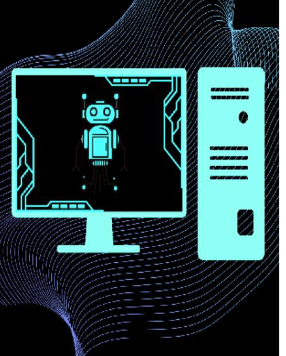A.I is not our enemy
February 1, 2023
OpenAI recently developed a language model named ChatGPT that changes the way in which society views and uses technology. This new model is laced with the ability to work as virtual assistants, a language translator and chatbots used to aid the way in which we interact with technology.
Think of ChatGPT as Siri without an attitude problem. ChatGPT provides a free application that will write or give any information upon asking. Students can use this tool to search for any information desired and to aid in brainstorming new ideas.
While this application is revolutionary in its collection and production of information, educators worry that this new tool will aid too much to a student’s advantage, writing computer generated essays and solving homework problems. Many education boards have even gone as far as blocking this application from school-given equipment and networks in attempts to combat this from happening.
Furthermore, ChatGPT can also be used recklessly. If this technology were to land in the laps of the wrong person, they may learn how to commit a criminal act in seconds. Although the technology may be designed to decline these inhumane requests, there is a possibility to form a loophole. This is possible through the algorithm that ChatGPT runs on. As this technology is used, it retains information and human-like responses, which could cause the reproduction of ambiguous and potentially detrimental information.
Although prone to errors, as more research is done, these kinks could be resolved. As this technology is used, answers could become more accurate. ChatGPT is based on data, meaning it is probabilistic, and the human use of this technology will increase the range of information and give more reliable information.
This proposes a question: Will ChatGPT become a nightmare within a classroom setting?
Although ChatGPT may give an easier and more efficient way for students to cheat, cheating did not commence with the birth of this new technology. Students have practiced and mastered the art of cheating. Whether it be copying their classmate’s homework or simply bringing a cheat sheet into a testing room, the students who are characterized by cheating will continue to cheat. This is especially true after the COVID-19 pandemic, where most classes were moved online and continue, even now, to run on a hybrid class schedule. Lucky for educators, many anti-cheating detection services have developed services in an attempt to combat this type of plagiarism.
Because cheating with or without ChatGPT is inevitable, how could educators use this service to their advantage in the classroom?
ChatGPT services can be implemented in the classroom for a plethora of reasons. Whether it be to simply aid students in formatting an essay or generating ideas for said essay, these services can be used for good. The flaws in this technology can even be used to the advantage of educators, with the faulty responses that sometimes appear when using ChatGPT services. A popular structure for teaching produced by Benjamin Bloom’s taxonomy explains “the value of material and spread of information” (Barrett, 2023).
Our society and school systems are no strangers to change and reform. It was just three years ago when Zoom became the new format for many of our classes. Rather than letting upgrades in technology and the spread of information deter educators from utilizing its advantages, educators should learn how to incorporate these advances into their lesson plans. In any case, educators are leading a technology-fueled generation, and it would be to their advantage if they prepared for a more digital future.







